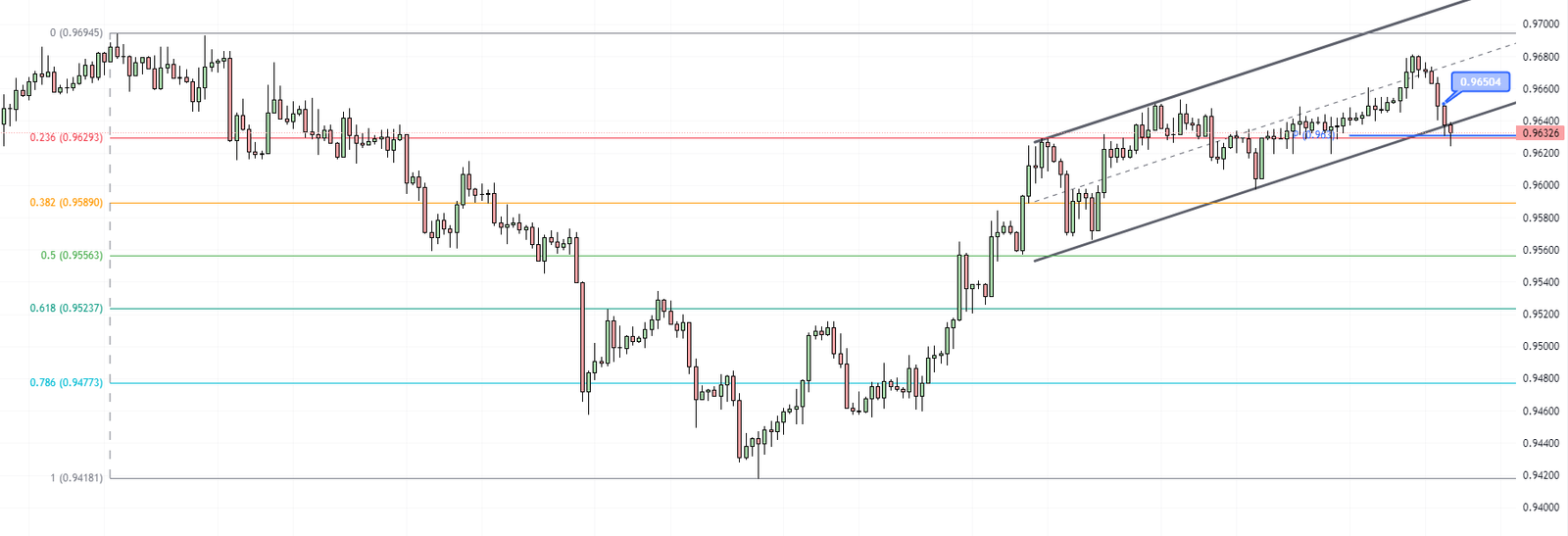FxNews—In today’s comprehensive EURCHF forecast, we will first scrutinize Switzerland’s current economic conditions. Then, we will meticulously delve into the details of the technical analysis of the EURCHF pair.
Swiss Bond Yields Decline
Bloomberg—Recently, the yield on 10-year Swiss government bonds has notably declined, dropping into the 1% range. This marks the lowest point in two months. This change is part of a broader global pattern where government bonds are being sold off more frequently.
A key factor behind this trend is the latest data on US inflation, which came in lower than many had anticipated. This development has led to a growing belief that the US Federal Reserve might hold back on further interest rate hikes. Such a decision would shift from their recent pattern of significant rate increases, often called a “tightening campaign.”
Switzerland stands out in this scenario due to its low inflation rates compared to other advanced economies. This stability in prices has been a hallmark of the Swiss economy. For instance, in September, the inflation rate in Switzerland was only 1.7%, lower than what many experts predicted. Even more impressive is the core inflation rate, which measures inflation without volatile components like food and energy prices, hitting an 18-month low of 1.3%.
The Swiss National Bank (SNB) has played a significant role in this economic stability. In its last meeting, the SNB decided to keep its policy rate at 1.75%. The bank noted that its previous rate hikes had successfully tempered overall demand. However, these increases also hurt economic growth.
Economic Implications: Beneficial or Detrimental
The situation with Swiss bond yields and the broader economic context offers positive and negative aspects. On the positive side, low inflation rates in Switzerland show a stable economy, which benefits both the country and its investors. Stable prices mean less uncertainty for businesses and consumers, which is generally good for economic growth. However, the downside is reflected in the SNB’s concern about reduced economic growth due to past rate increases. When interest rates rise, it often leads to reduced spending and investment, slowing economic growth. This balancing act between controlling inflation and maintaining growth is a delicate one.
In the broader context, the decline in Swiss bond yields, following the trend of government bond sell-offs due to the US inflation figures, highlights the interconnected nature of global economies. The actions of the US Federal Reserve have ripple effects worldwide, impacting small but stable economies like Switzerland’s. While the current situation seems to lean more towards being beneficial due to the stability and low inflation, the potential risks to economic growth cannot be ignored.
EURCHF Technical Analysis and Forecast

The EURCHF currency pair is at a pivotal juncture, retesting the now-supportive, previously broken bullish flag. The RSI indicator’s position above the median line warrants a closer examination, particularly on the EURCHF 4-hour chart, for a clearer understanding of the price action.

Intriguingly, the pair tests the 0.963 pivot, coinciding with the 23.6% Fibonacci retracement level. Despite the bears breaking through the bullish flag, the key question remains: will this selling pressure be sustained? If the price stabilizes below the pivot, we may see a decline extending to the 38.2% and 50% Fibonacci levels. The 0.965 mark underpins this bearish outlook.
However, a rebound above this level could revive the bullish flag’s validity, introducing a potential shift in the trend. Thus, the pair stands at a critical crossroads, with the next move likely to set the tone for its near-term trajectory.